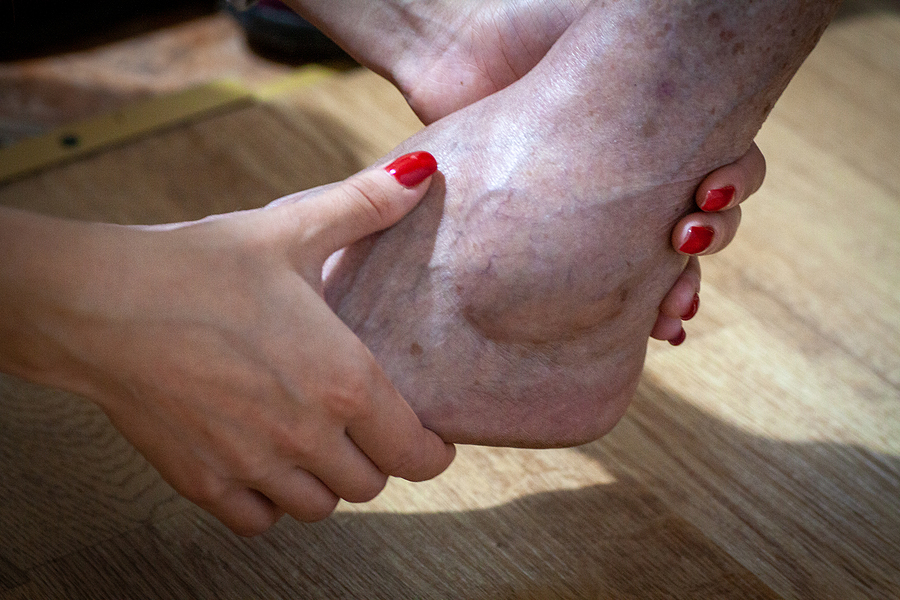Purple, Black and Blue Feet in Elderly Adults
Category:

If you or your loved one have noticed discoloration in your feet, ankles, or legs, you should consult your doctor to determine the cause. Reasons for purple patches on elderly skin or other discolorations in the lower extremities differ from one person to another.
Purple feet in the elderly, blue feet in the elderly, black and blue feet in the elderly, and feet turning black in elderly people are all sources of great concern for both the patient and the family members who care for them.
Let’s look at some of the reasons for the discoloration and why elderly adults are at risk for developing the condition.
What causes purple feet in elderly people?
Leg discoloration occurs when the veins in your legs aren’t performing at their full capacity. Elderly adults often have underlying health conditions or physical limitations resulting in blood not being returned to the heart as it should.
Circulatory deficiency means the valves located in the legs cannot push blood upward to the heart. Damaged or aging veins in the body can lead to blood pooling in the feet which causes purple legs in elderly individuals.
What are some risk factors for developing circulatory deficiency that results in purple legs in elderly people?
- Being over age 50
- Being overweight
- Blood clots
- Varicose veins
- Kidney failure
- Multiple pregnancies
- Injury to the area or previous surgery to the area
- Kidney failure
- Existing heart condition
- Immobility or prolonged inactivity
- Uncontrolled blood sugar levels
Uncontrolled blood sugar causes the veins in the legs to become hardened and stiff which impairs circulation. Untreated varicose veins are twisted and enlarged making it impossible for blood to circulate properly.
If you have either of these conditions you should talk with your doctor about treatment. Purple spots on elderly skin are one of the first signs of circulatory insufficiency to the feet and legs.
Heart conditions, kidney failure, and blood clots should also be discussed with your doctor to assure that everything possible is being done to maintain adequate blood circulation despite these conditions if possible.
Reduced or restricted blood flow can become very serious if cells and tissue begin to die. If there is little or no circulation to the feet you may notice feet turning black, especially in the elderly. If this occurs, gangrene can set in which can lead to possible amputation if it is not treated. This is a medical emergency and requires immediate assessment and treatment.
Aging can’t be stopped, and some degree of circulatory impairment is unavoidable as we get older, but we can improve circulation and reduce the occurrence of blue feet in elderly adults by trying some of the tips below.
- Eat a healthy diet to maintain a healthy weight.
- Get up and move whenever you can. Movement is essential to improving circulation and maintaining independence.
- Walking is a great way to get exercise. Swimming also stimulates circulation if walking is not possible.
- Elevate your feet when sitting for prolonged periods.
- Wear compression stockings to promote circulation and reduce pooling and swelling.
- Don’t smoke!
- Keep your feet warm.
- Work with your doctor to treat any underlying medical conditions that could be the source of the problem.
Treatment options for discoloration of the feet and legs in elderly people depend on the cause. Sometimes a healthy lifestyle that includes exercise, the proper food, and not smoking is all that is necessary.
For others, treatment of underlying physical conditions may help with swelling, discoloration, and discomfort.
Only a doctor can determine the cause of the condition and recommend the best treatment plan for you or your loved one. Make an appointment with your physician at the earliest sign of discoloration in your extremities for the best outcome.
Subscribe
Date: August 24, 2021
Category:


